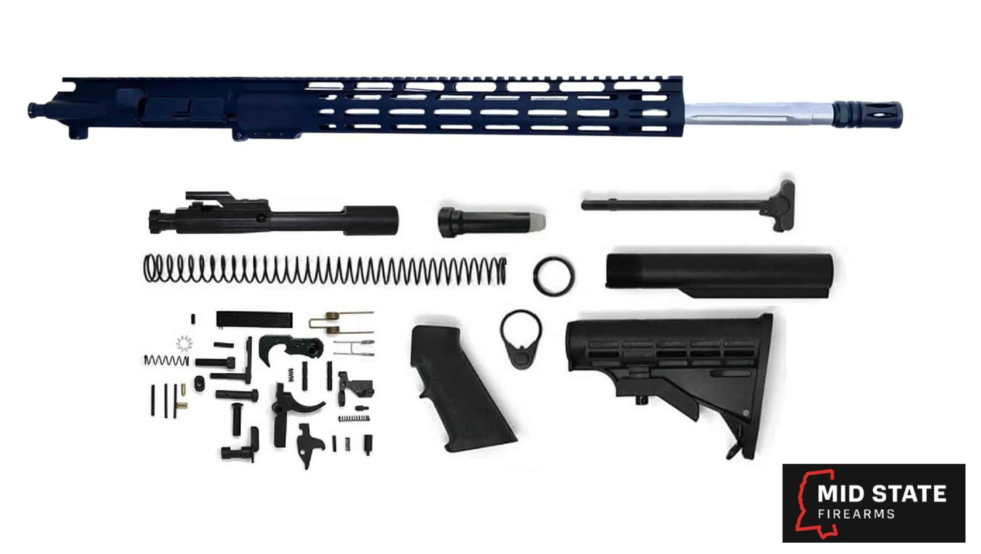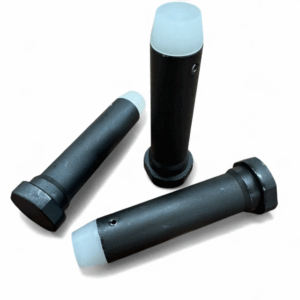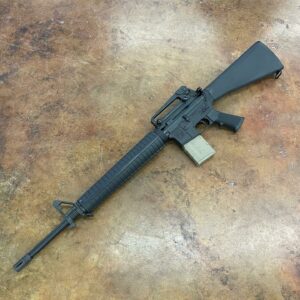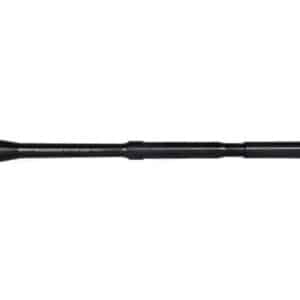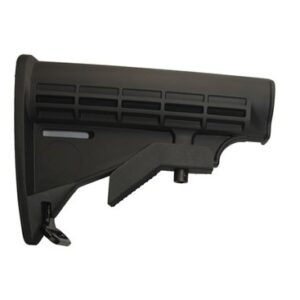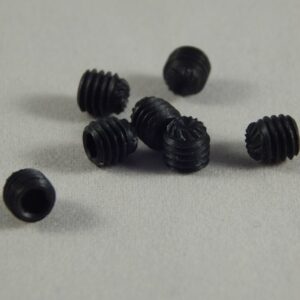There are a few parts of an AR-15 as critical to build or upgrade as the AR-15 gas system. When assembling your first rifle or optimizing an existing build for a specific purpose, knowing the gas system and the options available to it will make a big difference in the performance. This is essential to the level of recoil management, increased reliability, and even modification to a suppressor-ready rifle.
And in this in-depth guide, we shall unravel AR 15 system gas types using simplified words, how they would work within the context of cycling your gun, and what the best gas system for AR options are as per your shooting requirement.
Understanding the Role of the Gas System
What Does the Gas System Do?
At its core, the gas system AR 15 has the duty of cycling the rifle when a shot has been discharged. A small gas port in the barrel redirects expanding gases from the fired cartridge. These gases either enter a gas tube (direct impingement system) or are used to push a piston (piston-driven) to move the bolt carrier group backwards. This step ejects, resets the hammer, and loads a new bullet. Unless you have a properly functioning AR gas system, your gun can never cycle reliably.
Key Factors that Affect Gas Flow
The effectiveness and performance of gas systems for AR 15 platforms are based on a number of variables. The dwell time, or the duration of the gas pressure residency in the barrel after the bullet goes past the gas port, directly affects the functionality. Greater dwell times tend to mean easier operation. The other factors that influence it are barrel length, the size of the gas port, the weight of the buffer, and the spring tension of the buffer system. All these variables either break or make your AR-15 performance.
Gas System Length Options Explained
Rifle Length Gas System
The 20-inch barrel original standard is the rifle-length gas. Having the gas port about 12 inches from the chamber, this system provides the softest shooting of all the lengths of the AR gas system. Its dwelling period is long, hence when unlocked, the bolt experiences less pressure exerted by the gas, which reduces wear and recoil. It is commonly preferred among target guns, high-precision shooters, and people creating range-dedicated rifles.
Mid-length Gas System
The mid-length gas system is found mostly on 16-inch barrels, locating the gas port roughly 9 inches away from the chamber. The configuration offers a compromise between recoil management and reliable cycling. It is arguably the best gas system for AR 15 rifles to date in this barrel length range by being a smoother shooting system than carbine-length, but not getting the excessive fouling experienced on occasion with rifle-length systems on short barrels.
Carbine-length Gas System
The carbine-length gas system is applied usually when used with 14.5-inch barrels, and short 16-inch builds. With a gas port distance of approximately 7 inches to the chamber, the system runs at a higher pressure with a reduced dwell time. It has the tendency to cause more recoil and may wear parts quicker, but is considered highly durable, stretching even into dirty or harsh environments. This is very commonly used in M4-style military builds as well.
Pistol-Length Gas System
The gas system is already a requirement on AR-pistols and SBRs, and is reserved for barrels less than 10.5 inches. Having a port as close to the chamber as 4 inches, this configuration delivers high gas pressure and a very short dwell time. It is often too gassed, leaving it with rough cycling unless it uses the correct buffer or an adjustable length gas block. It has weaknesses, but it is necessary since it is the setup with an ultra-compact build.
Choosing the Right Build for Your Setup
One should choose between the different AR-15 gas system types available, with a list of considerations to take into account. Begin by identifying your barrel length, as this is the most significant factor. Then, think of the intended usage of your rifle. Tactical rifles and home-defense rifles benefits from both reliability as well as compact size, making mid-length systems or carbine-length systems preferable. Suppressed rifles benefit most when used with an adjustable gas monitoring block in middle or rifle-length structures and provide minimal backpressure and retrograde.
For competition shooters, the speed of follow-up shots and minimal recoil make mid- or rifle-length systems the popular choice. On the other hand, casual range shooters or hunters can choose any configuration that offers the smoothest operation in the size of barrel they want.
Comparing Gas System Technologies
Overview of Direct Impingement
The effect of direct impingement on two-phase flow is very large in a high-pressure, low-temperature area of operation. The example area is the piston engine. The cooling of the pistons and the high conductivity of hot fluids have been used to advantage.
The AR gas system is of a direct impingement (DI) design with the traditional form. In this system, gas is expelled into a small tube into the bolt carrier group, propelling it back. This practice is simple and low-cost, and it has been practiced since the development of the AR-15.
DI systems, however, deposit fouling straight into action, thus necessitating frequent cleaning. Nevertheless, due to the ease of use and availability of broad parts distribution, DI systems take the lead among the available AR in the market.
AR-15 Piston Systems
A piston-driven system is a system that has its gas driving a piston to drive the bolt carrier group without directing hot gases into the receiver. This keeps the rifle cleaner, cooler-running particularly beneficial in suppressed or full-auto use.
The downside? Piston systems are more costly, heavier, and less customizable than DI builds. To the vast majority of users, however, for many users, the cleanliness and reliability trade-offs make the pistons worth the investment.
Common Tradeoffs between DI and Piston
A decision to use DI or piston-based AR gas systems can be considered a number of trade-offs. DI has diminutive weight, less expensive parts, and simple part replacement. Piston systems minimize weight and compatibility in favor of Fouling and heat. Another obstacle is price- DI rifles and parts are much more affordable. The last decision should rest on the fact that simplicity or cleanliness is of utmost concern to your use case.
Exploring Gas Block Types
Low-profile Gas Blocks
Low-profile gas blocks can be used in conjunction with free-float handguards and allow for the use of more rail space and accessories. It is a go-to place for modern modular builds and goes perfectly with the longer handguards.
Front Sight post/Gas Blocks
This is the traditional front sight post gas block that integrates a certain gas system and A2 A2-style fixed sight. This authoritative set is hard, proven, and easy to use, especially with iron sights. It is less adaptable when it comes to optics mounting, but it is used in military and retro-style builds.
Adjustable Gas Blocks
An adjustable gas block is a smart option in case you want to have maximum control over the behavior of your AR gas system. These allow you to adjust the feed of the gas into the system, and this is very useful when shooting suppressed, using light loads, or adjusting your buffer system with loss of recoil. An adjustable gas block may be a good suggestion for people who need to reduce recoil or adjust a precision rifle.
Fine-tuning and Troubleshooting Tips
Sometimes it is trial and error to get your gas system AR-15 dialed in. When you feel like it is overpowered and your rifle is throwing brass too far to the front, you possibly have an over-gassed rifle. This can be remedied by a heavy buffer, a stronger spring, or an adjustable gas block. On the other hand, we have the undergassed rifle, which can be short-stroke or not lock back on an empty mag, which can be remedied most of the time by using higher-pressure ammo, cleaning the gas port, or switching to a lighter buffer.
Some of the simplest and yet so easy to forget are keeping gas ports clean and rating your gas block to make sure it is aligned correctly. Moreover, there is no point in having a mismatched buffer-spring system in relation to your gas system.
Wrapping It Up: What Setup Works Best for You?
The proper choice of AR 15 gas system is the key to the smooth functioning of your rifle, and it can help you shoot hit after hit at the range, win a competition, or protect your household. Length, use pattern, shooting style, and budget all come into play in your final determination. Being armed with the knowledge of the AR gas system lengths and what each has to offer will assist in making a quality decision.
Regardless of your intention, there is no doubt that as you continue to learn more about the intricacies of AR gas systems, you will find yourself with a superior and more consistent rifle. The perfect gas system not only concerns performance, but also supplies confidence in knowing that your AR is designed to serve your needs to its fullest ability with accuracy and precision.

